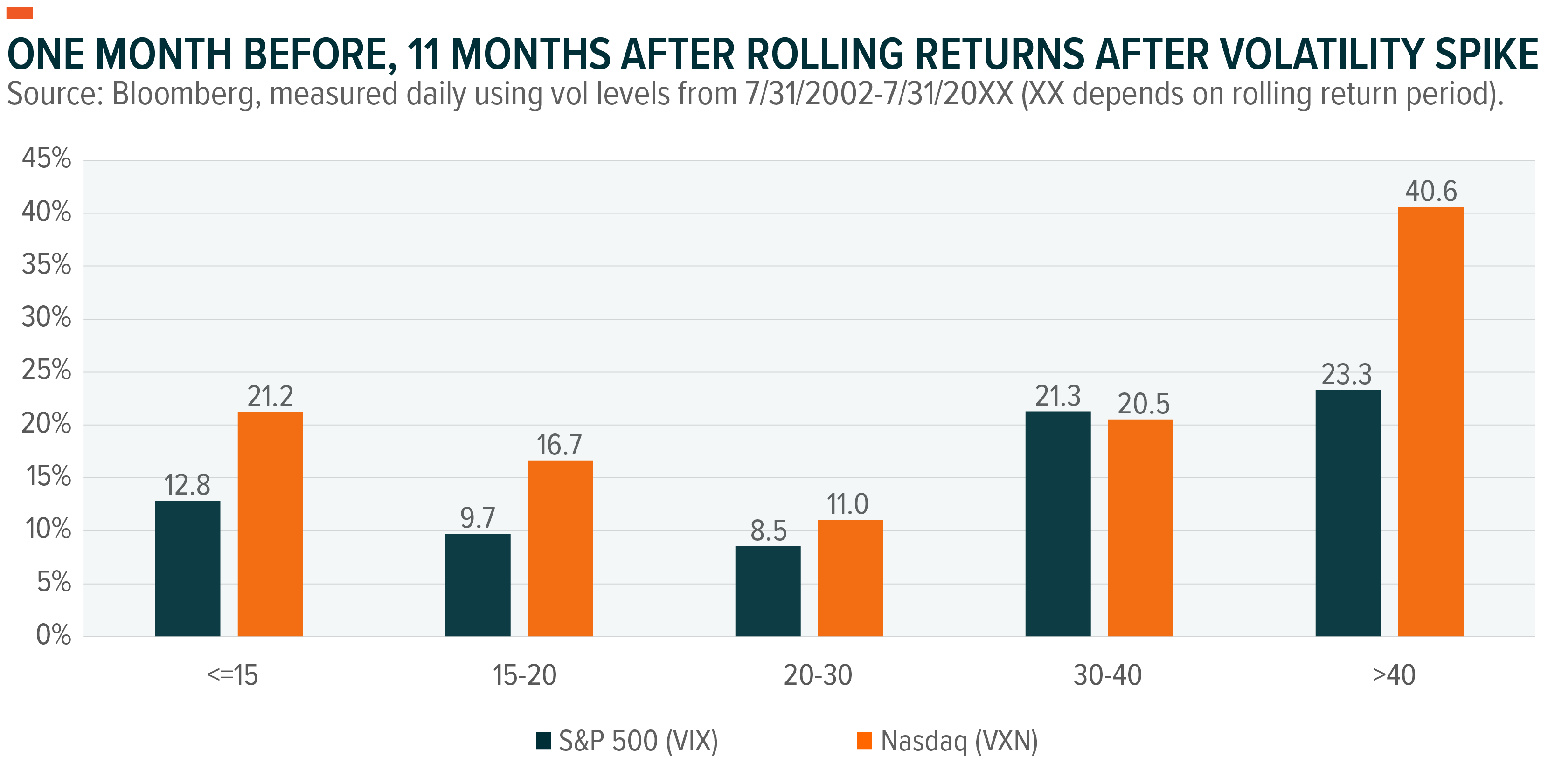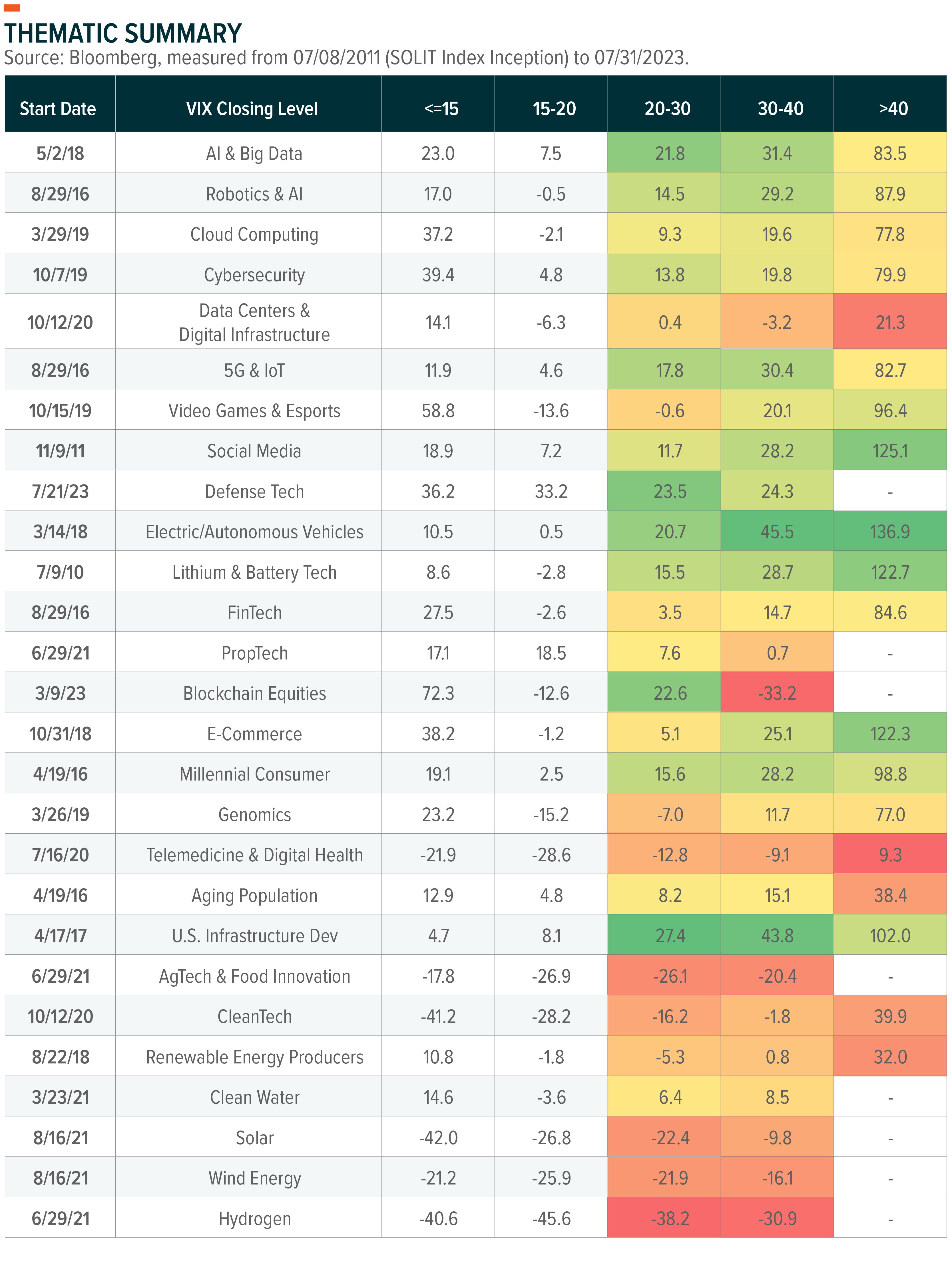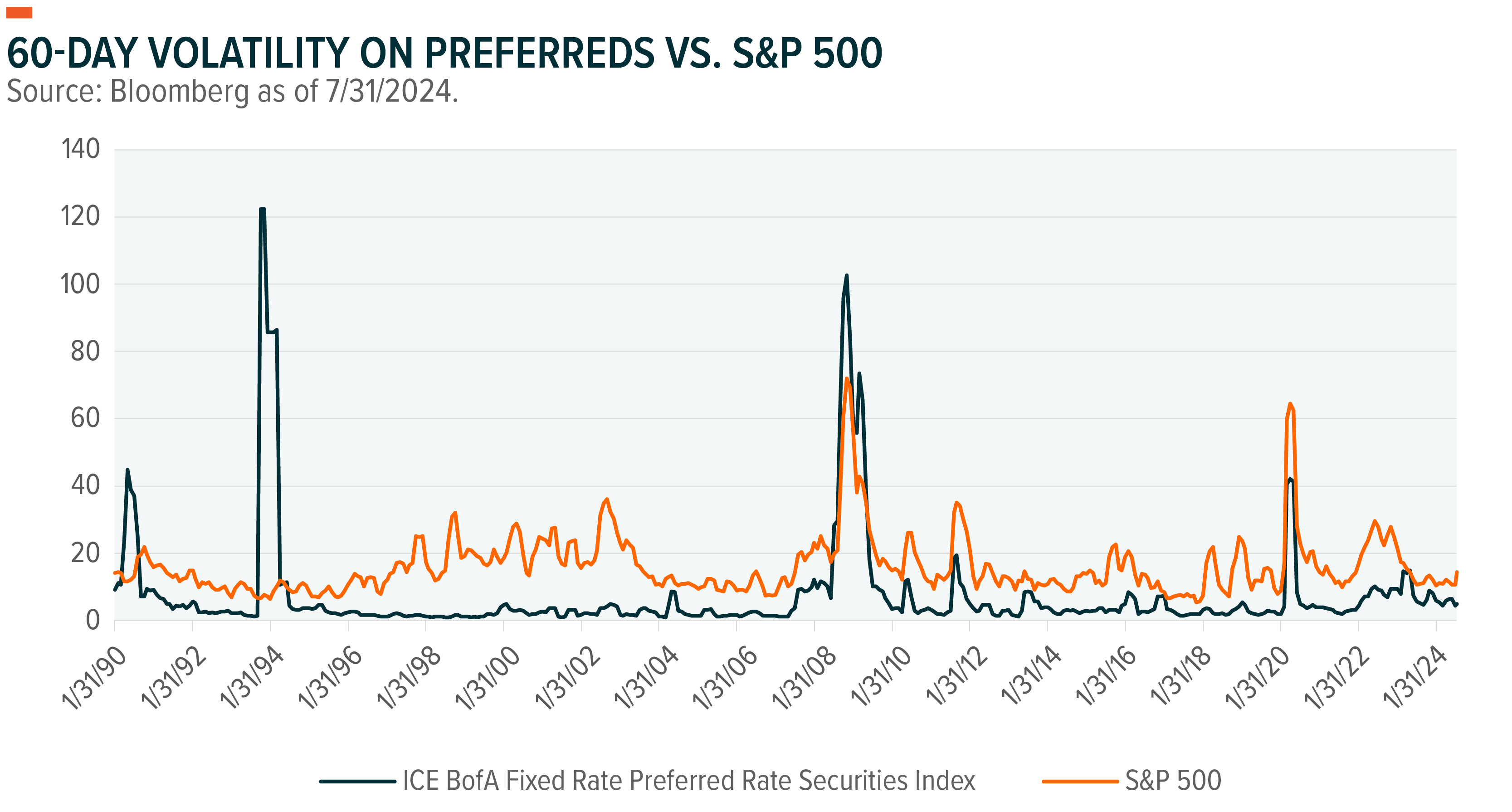Inflection Points: The Summer Vol Stew Recipe

Ingredient List:
1/4 cup geopolitical risk tied to the first-ever incumbent withdrawing from a presidential race after the primary
1/4 cup monetary policy risk with the Fed holding rates at 5.5%
1 tablespoon of economic slowdown fears after the weak job report
A pinch of liquidity crunch from a global carry trade unwind on a stronger yen
Instructions:
Mix and let simmer on medium for two weeks…
The market rout on Monday, August 5, was the product of volatility ingredients boiling up at a time of mounting concern that valuations were too high. Prior to the selloff, U.S. equity volatility had been quite low for much of the year.1 We believed that the market was undergoing a regime shift where monetary policy and related data releases would play a smaller part in driving uncertainty and that the complicated geopolitical backdrop would cause volatility to rise.2 Both factors played a role in the recent volatility spike, along with economic concerns and tightening liquidity.
By Friday, August 9, the market had some footing. The irony of this episode is that earnings growth continues to shape up nicely and the S&P 500’s long streak of 12% or better quarterly profit margins remains intact.3 The selloff could simply reflect a small air pocket in the economy that proves to be a blip, or it could prove to be the canary in the coal mine signaling a bigger downturn. Either way, this type of volatility is a reminder that there’s value in a long-term perspective and that investors do have opportunities to add recipes to their cookbooks that can calm nerves.
Key Takeaways
- Increased volatility does not necessarily impede market returns over a longer time frame.
- Some themes can hold up better in volatile environments given their stable revenue streams, including U.S. Infrastructure and Defense Tech.
- Alternative income strategies can help reduce volatility by moving the capital structure with preferreds or hedging equity risk with covered calls.
Good Things Come to Those Who Wait
Whether we’re talking about gumbo, chicken soup, beef stew, or ramen, they all need time to simmer. Bouts of volatility typically arise due to a confluence of events—some predictable and some not—that increase uncertainty. These rollercoaster rides can be unsettling for investors, but they often pass with few lasting effects. When the VIX, a commonly used measure of equity volatility, is in the 25–30 range, it signals the potential for high volatility.4 Since 1990, the VIX has been above 25 about 18% of the time. One year after the VIX exceeds that threshold, the S&P 500 is only down in 21% of those instances and in just 4% of all trading days. In other words, most volatility spikes are not associated with major selloffs and are false positives.
Volatility spikes typically do not impact long-term investors. The 12-month rolling returns around volatility spikes show that equity markets often recover quite fast. Comparing prices one month before the elevated volatility with prices 11 months after shows that the markets often charge higher after turbulent periods.5 This trend may prove the case yet again given the continued strength in corporate fundamentals, which includes S&P 500 companies delivering almost 5% sales growth and 12% earnings growth for second quarter of 2024.6

Thematic Ingredients for Uncertain Times
One way that investors can manage short-term volatility is by focusing on long-term trends. This approach might not eliminate or even reduce drawdowns in the short run, but the extended time frame and emphasis on the future can help contextualize the bumps. While high growth themes may have higher beta and swing more than the broad market, they also tend to recover quickly.
Several themes display fairly strong performance 12 months after a volatility spike. Given our view that geopolitics continues to be an important catalyst for volatility, two themes that look particularly interesting are U.S. Infrastructure and Defense Technology.7 As we’ve written in the past, both themes have bipartisan support and there is a good deal of funding already pledged. U.S. Infrastructure is buttressed by the combined $1.8 trillion from the Infrastructure Investment and Jobs Act and the CHIPS Act, and U.S. defense spending is approved for almost $900 billion in fiscal year 2024.8 Consistent with our long-term view of continued automation and digitalization, the Artificial Intelligence and Robotics themes have also performed reasonably well across different volatility regimes.

Serving Up Alternative Income
Another approach to consider in turbulent markets are strategies that help lower portfolio volatility. One method to preserving principle is moving up the capital structure. Preferred equities have equity and bond-like characteristics with modest correlation to the broader market.9 The segment is concentrated in the financial sector but historically displays much lower volatility than the S&P 500.

Hedged equity can also be an option. Covered call strategies sell options on underlying exposures to generate income. Typically, option premiums increase as volatility rises.10 These equity strategies can help generate income and reduce volatility at the same time. Investors focused on yield may want to look at strategies that sell calls on 100% of the underlying index, whereas investors interested in hedging equity upside might find a strategy that sells options on 50% more appealing.
